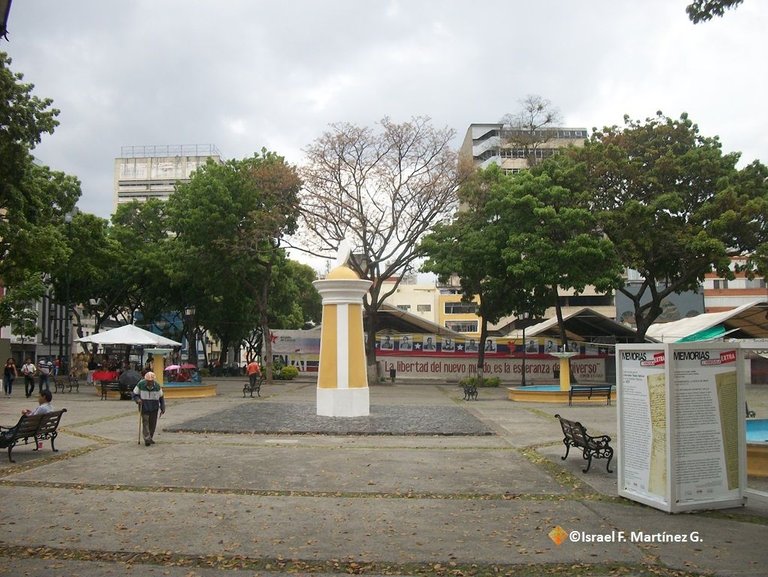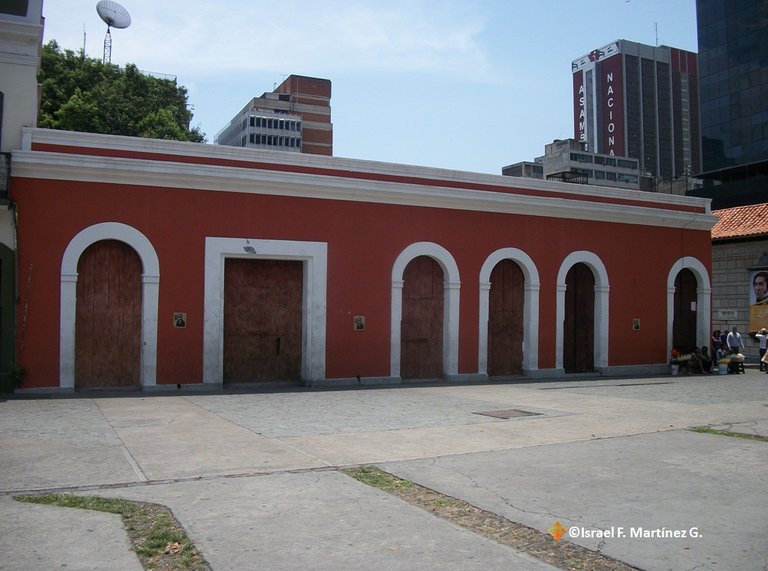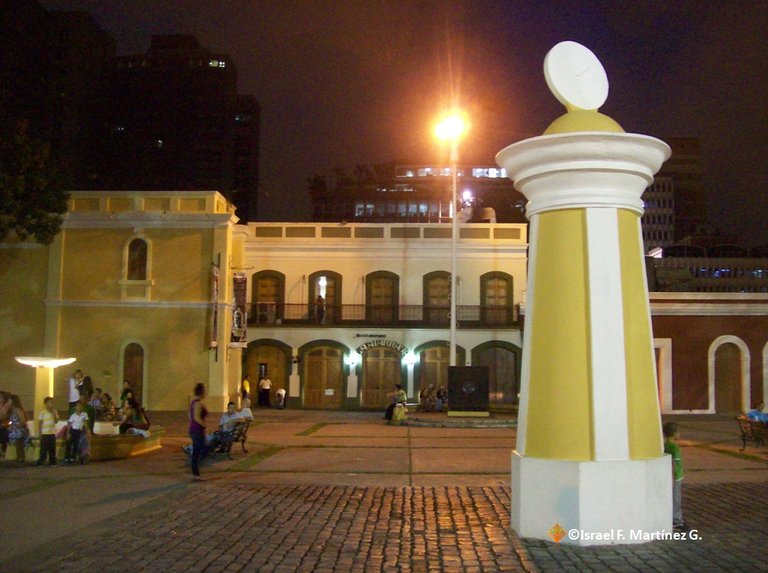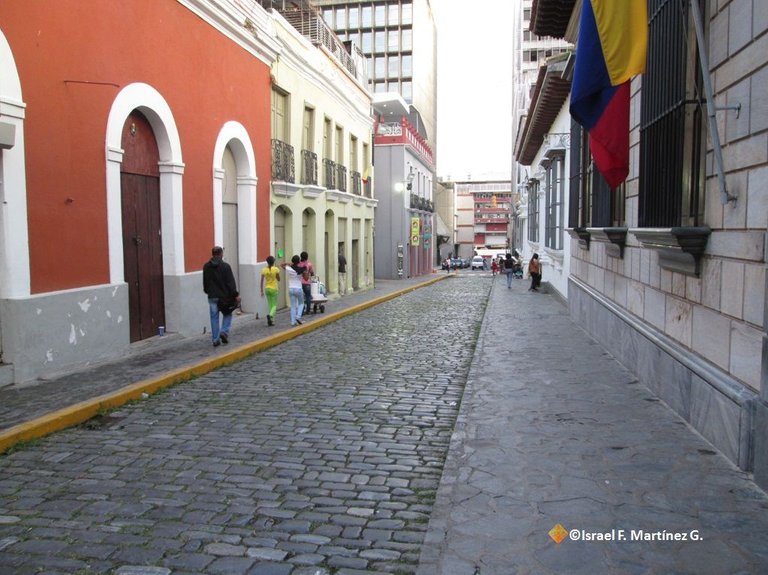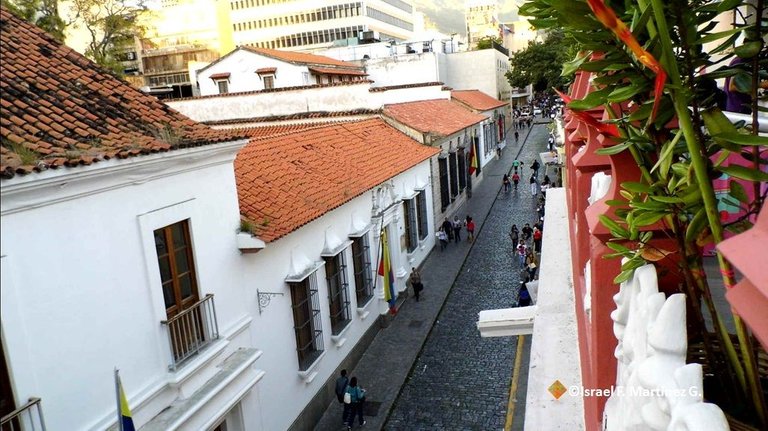English Version
My grandfather was a great man, an unconditional friend and an artist in every way, nine years after his departure I want to share with you this story, which at the time he gave me to accompany what today is the first photograph that adorns this series, I hope you like it!
It is immersed in its space is one of the oldest sites in the City of Caracas, the Plaza de San Jacinto dating back its origins to the year 1595 when the Convent of San Jacinto was established there by the Dominicans, today called Plaza Plaza The Venezuelan because a statue (while alive) of Antonio Leocadio Guzmán was erected there, it was ordered by his son Antonio Guzmán when he was president of Venezuela. Represented is also other important colonial buildings, such as La Real Audiencia, installed in 1786 next to the Casa del Libertador, and whose place is now the Bolivarian Museum and the Bolivarian Society of Venezuela.
The square was part of the convent until in 1660 the Dominicans were forced to leave the place that was passed to be administered by the provincial government of those times.
In front of the house of the Prócer de la Independencia there was then the well-known “Casa del Liki-Liki and the famous Tudela hat shop”, another establishment of greater memory located in front of the square, still existing is “La Atarraya”, a famous outlet for alcoholic beverages from fond memories of the accumulated years of drinking. In 1802 a marble "Sundial" was inaugurated at the request of Alejandro Humboldt and in 1809 the place was converted into a market. Despite being practically destroyed by a strong earthquake in 1812.
The pavement of the block is striking, which is paved Carthaginian custom according to some critics, left in Spain and transferred to Venezuela in colonial times.
Story Written By: Lic. Juan Martínez
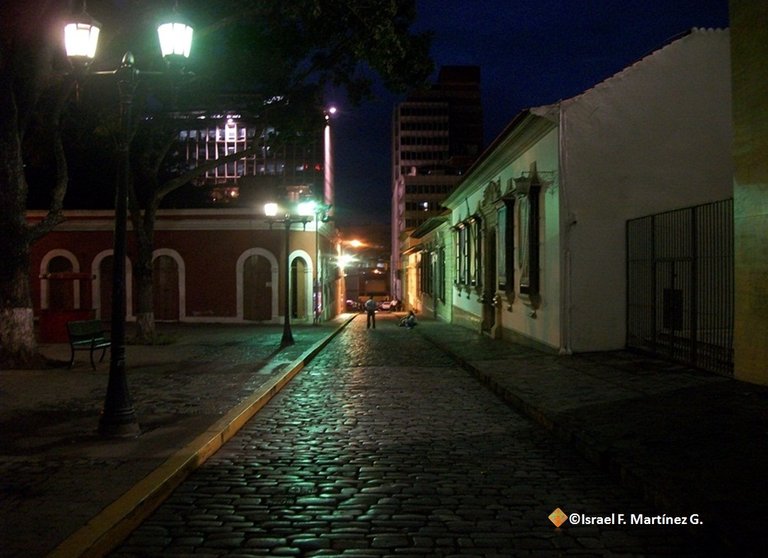
The photo contemplates the space between the corners of San Jacinto and Traposos in the center of the city of Caracas that forms the colonial historic center. In its space, some heritage icons and others of extreme popularity that, if they are not heritage, are on the mind of the Venezuelan of yesteryear.
Sundial of the Square The Venezuelan
The Venezuelan Square
Sundial of the Square The Venezuelan
Street of the Birthplace of the Liberator
Street of the Birthplace of the Liberator

Versión en Español
Mi abuelo era un gran hombre, un amigo incondicional y un artista en todos los sentidos, a nueve años de su partida les quiero compartir con ustedes este relato, el cual en su momento me regalo para que acompañara a la que hoy es la primera fotografía que engalana esta serie, espero que les guste!
Se encuentra inmerso en su espacio es uno de los sitios más antiguos de la Ciudad de Caracas, La Plaza de San Jacinto remontándose sus orígenes al año 1595 cuando allí se estableció el Convento de San Jacinto por parte de los Dominicos, hoy llamada toponímicamente Plaza El Venezolano debido a que allí estaba erigida una estatua (en vida) de Antonio Leocadio Guzmán la misma fue ordenada por su hijo Antonio Guzmán cuando fue presidente de Venezuela. Representado se halla también otras importantes edificaciones coloniales, como La Real Audiencia, instalada en 1786 al lado de la Casa del Libertador, y cuyo lugar están ahora el Museo Bolivariano y la Sociedad Bolivariana de Venezuela.
La plaza formaba parte del convento hasta que en el año 1660 los Dominicos fueron obligados a abandonar el lugar que fue pasado a ser administrada por el gobierno provincial de aquellos tiempos.
Frente la casa del Prócer de la independencia existió luego la muy conocida “Casa del Liki-Liki y la famosa sombrerería Tudela”, otro establecimiento de mayor recuerdo situado frente a la plaza, aun existente es “La Atarraya” famoso expendio de bebidas alcohólicas de gratos recuerdos de los beberos de años acumulados. En el año 1802 se inauguró en ella un “Reloj de Sol” realizado en mármol a instancias de Alejandro Humboldt y en el año 1809 el lugar fue convertido en un mercado. Pese a quedar prácticamente destruido por un fuerte sismo en el año 1812.
Llama la atención el pavimento de la cuadra el cual se encuentra empedrado costumbre cartaginesa según algunos críticos, dejada en España y trasladada a Venezuela en tiempos de la colonia.
Relato Escrito Por: Lic. Juan Martínez

- La foto contempla el espacio comprendido entre las esquinas de San Jacinto y Traposos en el centro de la Ciudad de Caracas que forma del casco histórico colonial. En su espacio algunos iconos patrimoniales y otros de extrema popularidad que de no ser patrimonio están en la mente del venezolano de antaño.*
Reloj de Sol de la Plaza el Venezolano
Plaza el Venezolano
Reloj de Sol de la Plaza el Venezolano
Calle de la Casa Natal del Libertador
Calle de la Casa Natal del Libertador
